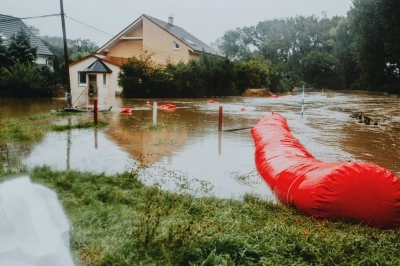SWPPP Success Stories: How Texas Projects Stay Compliant

From Houston’s highways to West Texas’s solar farms, these SWPPP success stories prove compliance is achievable with the right plan. A well-crafted SWPPP protects Texas’s natural resources, avoids fines, and enhances project outcomes. Let us help you create your own success story with our tailored SWPPP plans. Visit us to get started and ensure your project stays compliant!
Why SWPPPs Matter in Texas
Texas is no stranger to extreme weather, from torrential downpours in Houston to flash floods in the Hill Country. Construction sites, with their exposed soils and materials, can become major sources of stormwater runoff pollution if not properly managed. The TCEQ enforces the Texas Pollutant Discharge Elimination System (TPDES) permit program, requiring construction sites disturbing one acre or more to develop and implement a SWPPP. These plans outline measures to control erosion, manage sediment, and prevent pollutants from entering waterways.
Compliance isn’t just about avoiding fines—it’s about safeguarding Texas’s rivers, lakes, and aquifers while keeping projects on schedule and within budget. Let’s dive into three inspiring SWPPP success stories from across the Lone Star State.
Success Story 1: Houston’s Highway Expansion Project
- Project: A multi-year highway expansion in Houston
- Challenge: Urban setting with high rainfall and nearby sensitive waterways
- SWPPP Strategy: Comprehensive erosion control and real-time monitoring
In Houston, a highway expansion project faced stormwater challenges due to the city’s flat terrain, clay-heavy soils, and frequent rains. The project team developed a SWPPP with:
- Silt Fences and Sediment Basins: Captured runoff before it reached bayous.
- Vegetative Stabilization: Rapid seeding reduced erosion during rainy seasons.
- Real-Time Monitoring: Weather tracking adjusted BMPs (Best Management Practices) before storms.
Weekly inspections and contractor training ensured compliance. During a surprise TCEQ inspection after a major rain, the site passed with no violations, saving an estimated $100,000 in fines and delays.
Key Takeaway: In urban areas with high rainfall, real-time monitoring and training ensure SWPPP success.
Success Story 2: Austin’s Green Development
- Project: A mixed-use development in Austin
- Challenge: Balancing eco-friendly goals with regulatory compliance
- SWPPP Strategy: Innovative BMPs and community engagement
A sustainable mixed-use development in Austin aimed for LEED certification while meeting TCEQ standards. The SWPPP included:
- Rain Gardens and Permeable Pavement: Reduced runoff and filtered pollutants.
- Erosion Control Mats: Biodegradable mats stabilized slopes.
- Community Outreach: Workshops educated subcontractors and residents.
The eco-friendly BMPs met TCEQ requirements and earned praise from environmental groups. A TCEQ audit cited the site’s documentation as a model, reducing maintenance costs and boosting marketability.
Key Takeaway: Sustainable SWPPPs enhance compliance and project reputation.
Success Story 3: West Texas Solar Farm
- Project: A 500-acre solar farm in West Texas
- Challenge: Arid climate with intense, infrequent storms
- SWPPP Strategy: Tailored controls for unique conditions
A West Texas solar farm faced challenges from sudden thunderstorms. The SWPPP featured:
- Check Dams and Swales: Slowed runoff and trapped sediment.
- Stabilized Access Roads: Gravel and geotextiles prevented erosion.
- Phased Construction: Minimized disturbed areas.
Drone surveys monitored BMPs, and during a flash flood, the controls prevented sediment runoff. The TCEQ commended the project’s documentation, avoiding costly rework.
Key Takeaway: Tailored SWPPPs and technology ensure compliance in unique environments.
Common Themes for SWPPP Success
These stories highlight strategies for success:
- Proactive Planning: Anticipate site-specific challenges.
- Training: Educate all team members on SWPPP protocols.
- Innovative BMPs: Use modern and traditional controls.
- Monitoring and Documentation: Conduct inspections and maintain records.
Ready to ensure your Texas project stays compliant?
InstaSWPPP offers comprehensive SWPPP plans tailored to your site’s needs, from small developments to large infrastructure projects. Our expert team designs plans that meet TCEQ requirements, incorporating effective BMPs and clear documentation to keep you audit-ready. Take these steps:
How to Create Your Own SWPPP Success Story
Explore Our SWPPP Plans: Visit InstaSWPPP to learn about our customizable stormwater solutions.
- Work with Experts: Our consultants ensure your SWPPP aligns with Texas regulations.
- Train Your Team: We provide resources to educate your crew on compliance.
- Stay Audit-Ready: Our plans include monitoring tools to streamline inspections.
Start your compliance journey with InstaSWPPP’s SWPPP plans today!
Home > Articles > SWPPP Success Stories: How Texas Projects Stay Compliant

